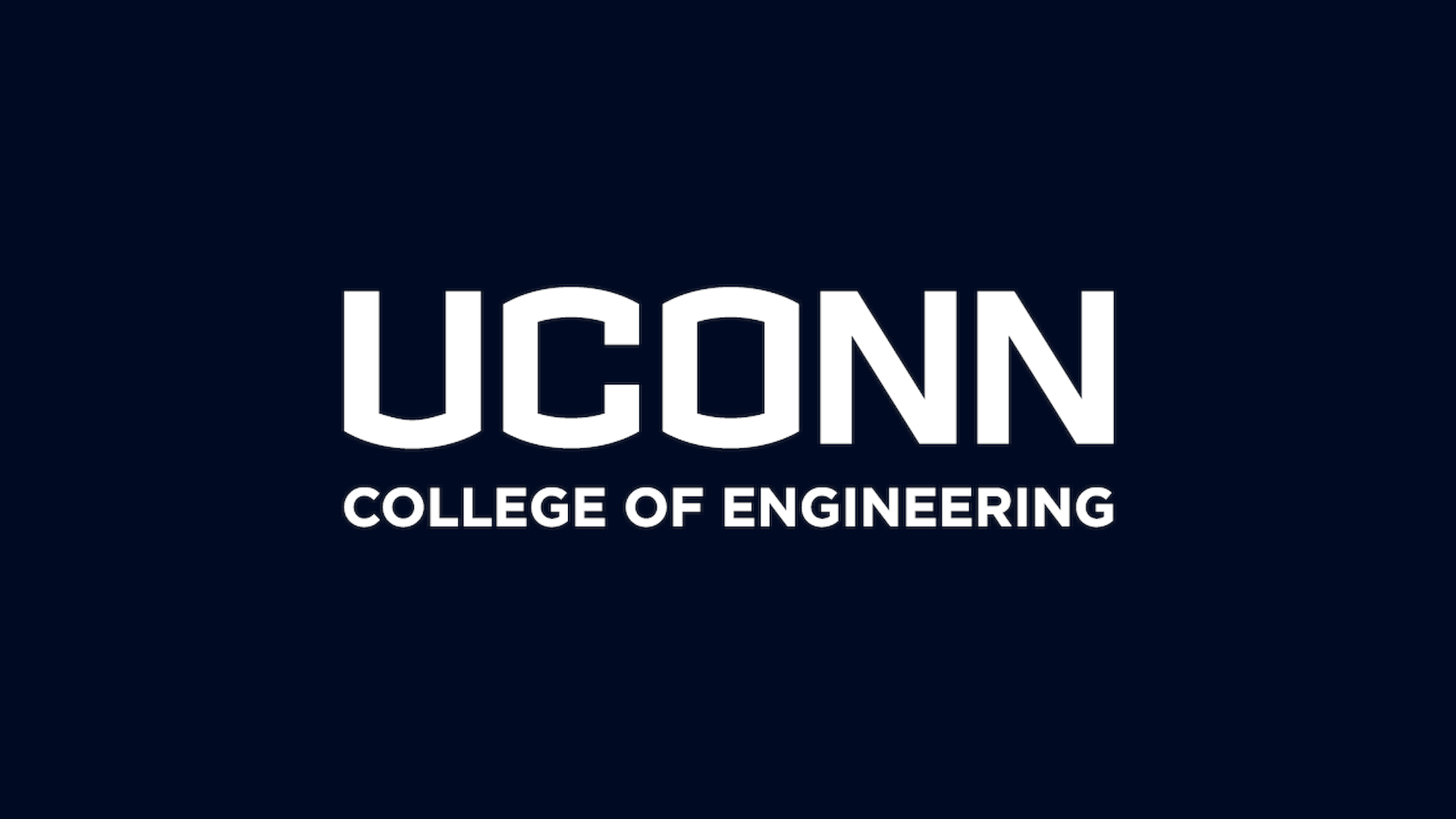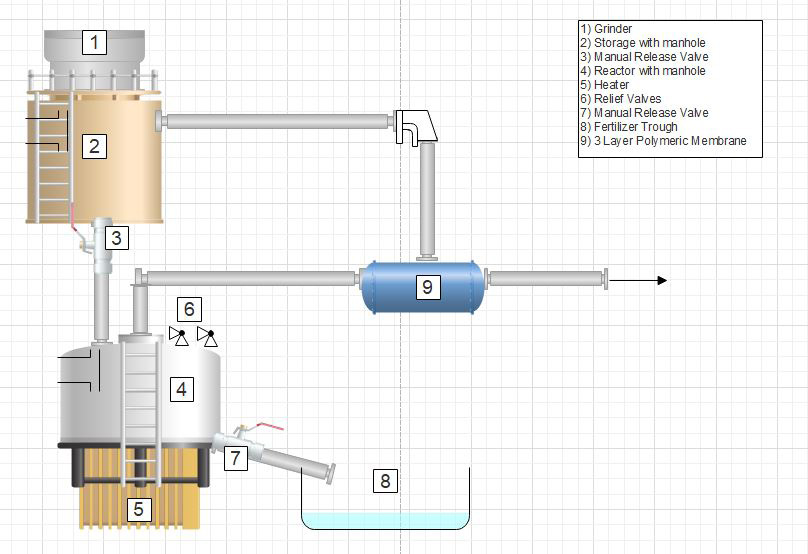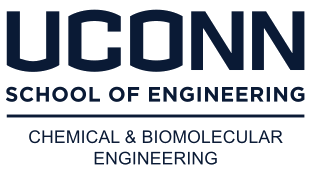

This video contains proprietary information and cannot be shared publicly at this time.
Figure 1

Chemical and Biomolecular Engineering
Team 1
Team Members |
Faculty Advisor |
Alexandra Aponte |
Douglas Cooper Sponsor Chemical and Biomolecular Engineering |
sponsored by

In the current food waste crisis, 40% of the food produced is thrown away and disposed of in landfills, which release methane and carbon dioxide into the atmosphere. The goal of this project was to design a bioreactor that converts food waste to energy in the form of methane, which is found in biogas along with carbon dioxide. Our design consists of a storage vessel for the food waste, an anaerobic digester that produces biogas and fertilizer from food waste, and a membrane for biogas separation into methane and carbon dioxide. We designed a process that produces enough energy to sustain itself while also providing small buildings with an alternate energy source. We used simulated computer modeling and hand calculations to measure the bioreactor’s methane yield and energy requirements. The release of carbon dioxide into the atmosphere is the main environmental concern of this project. Safety concerns include pipe leakage and grinder injuries, which can be addressed with a safety protocol and preventive maintenance of the system. The outcome of this project proves that bioreactors can become our primary method of treating food waste because they provide an efficient and economical method of obtaining energy whilst reducing our carbon footprint in the environment.
